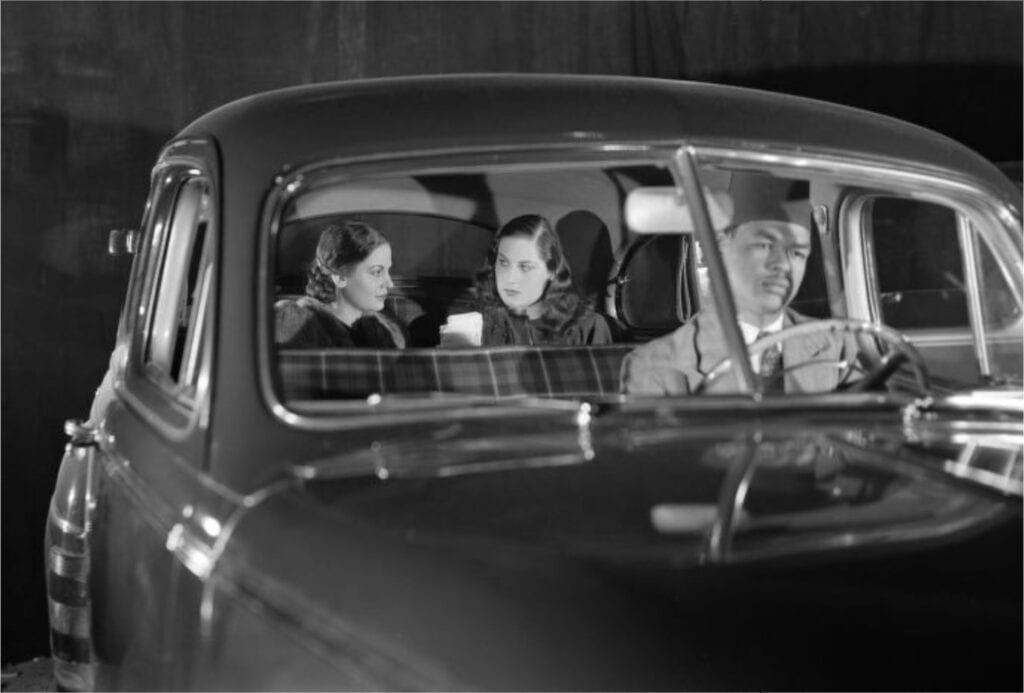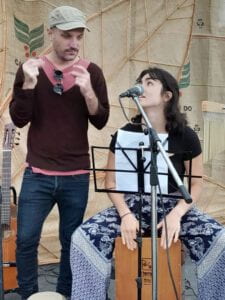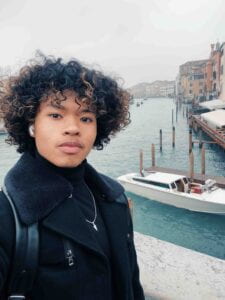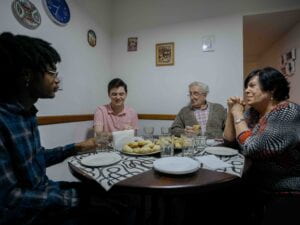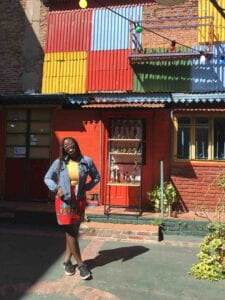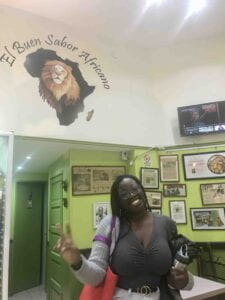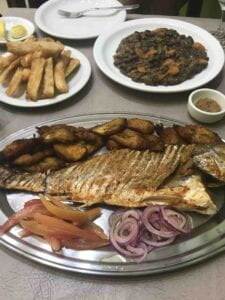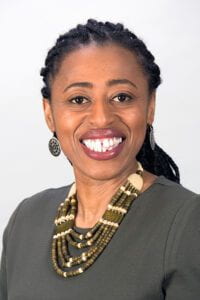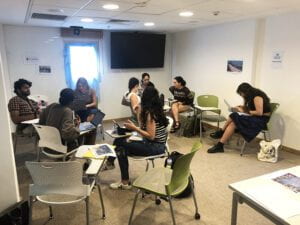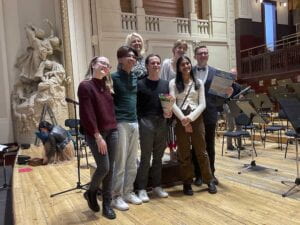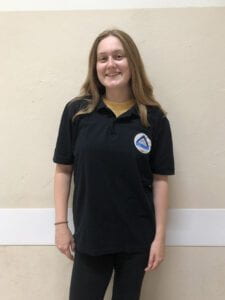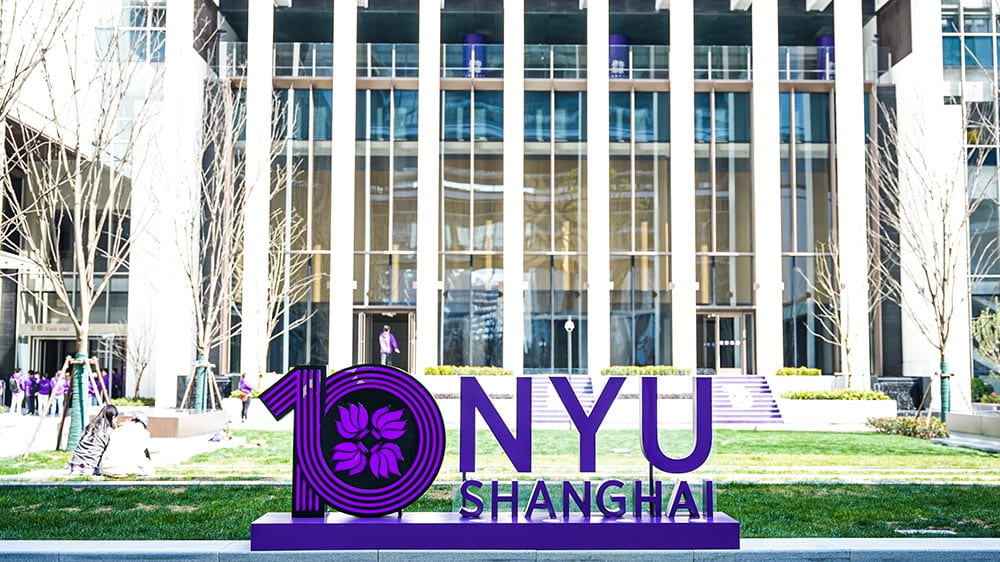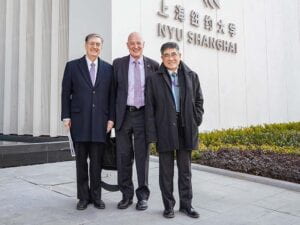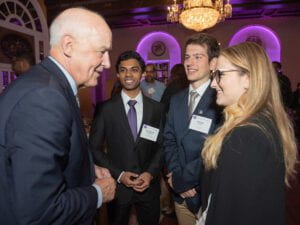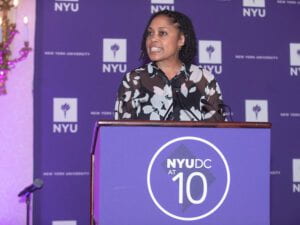This summer, Akkasah, the photography archive at NYU Abu Dhabi’s al Mawrid Arab Center for the Study of Art, released 1,500 digitized photographs from across the Middle East, with some photographs dating back to the 19th century. Located within the NYU Abu Dhabi Library, this remarkable collection houses a treasure trove of images that chronicle the history, culture, and transformation of the Middle East and beyond.
An example from the archive: Taken in 1949 by Ibrahim Omara, this image of Egyptian actresses Aziza Helmy and Laily Fawzy in the back of a car is available in the Samir Farid Collection.
Reference ID: ref34_000002
Origins of the Archive
This fascinating collection of the photographic heritage of the Middle East was established in 2014 by Professor Shamoon Zamir, who still serves as its director. “When I joined NYU Abu Dhabi, I very much wanted to make some kind of contribution to work in the region,” says Professor Zamir. After noticing a lack of Middle Eastern photography archives, he designed Akkasah to be completely accessible, both online and in person.
Akkasah acquires photos from donations, family albums, studios, and even flea markets. They also work with people who allow Akkasah to digitally archive their collections while they retain the physical copies of their photographs.
Once collected, each photo is individually cataloged with any available metadata, such as the subject matter and location. Although most archives catalog their collections folder by folder, Akkasah catalogs each photograph. It’s a time-consuming process, but the extensive metadata and easy searchability put Akkasah in a class of its own.
Scholarly Impact
With its diverse collection of roughly 40,000 images spanning the late 1800s to the present, Akkasah provides a unique window into the past. Anthropologists, historians, and social scientists from around the world have access to this invaluable resource, offering insights into education, religion, fashion, and more.
“There are both amazing surprises and expected things in there,” says Professor Zamir. Some subjects provoke questions, for instance, two women kissing in a Cairo photobooth in the 1940s.
Beyond its role as a scholarly resource, Akkasah opens its doors to students and the wider community by hosting exhibitions, seminars, and lectures. They have taught workshops on skills such as archiving and constructing photo books. And anyone can browse the archive in person or online.
“Anyone, academic or nonacademic, can make an appointment and see whatever they want to see,” says Professor Zamir. “In fact, we very much welcome it.”
Professional Development Opportunities
For students who want to learn even more about archiving, Akkasah offers paid internships. Undergraduates can gain valuable experience in photography, digitization, and curation.
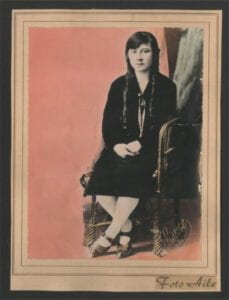
An example from the archive: This studio portrait of a seated woman comes from the Kadikoy Foto Aile in Turkey and is available in the Ozge Calafato Collection.
Reference ID: ref263
Emily Broad, a Raleigh, North Carolina, native who graduated from NYU Abu Dhabi in 2022 with a degree in Art and Art History, is one former intern. “Akkasah is one of the reasons why I applied to NYU Abu Dhabi,” says Emily. “I was able to develop my interest in photography not only as a practice but also as an academic discipline.”
As part of a summer research project, she cataloged a collection from the granddaughter of Butti Bin Bishr who worked closely with Sheikh Zayed, the United Arab Emirates’ founder. “I spent the whole summer talking with her and going through each image, dating them and writing descriptions. That was a unique experience because I got to work with someone who was high-level in the UAE as well as form a relationship with her through the archival work.”
Building on the skills she learned, Emily went on to do an internship at the Metropolitan Museum of Art and is now pursuing her PhD in Visual and Cultural Studies at the University of Rochester.
A Cultural Reservoir
Perhaps one of the archive’s most important roles is the preservation of cultural heritage. It documents traditions, customs, and art forms, helping safeguard the rich cultural tapestry of the Middle East. Anyone can stop in to reconstruct narratives, explore societal changes, and gain insights into the past.
Emily encourages students to take advantage of the unique resource. “Akkasah gives you a different look at the region than what people are used to, especially if you’re an American student,” she says. “I feel like we have preconceived notions about the Arab world that working with Akkasah really changed for me.”
Written by Kelsey Rexroat
